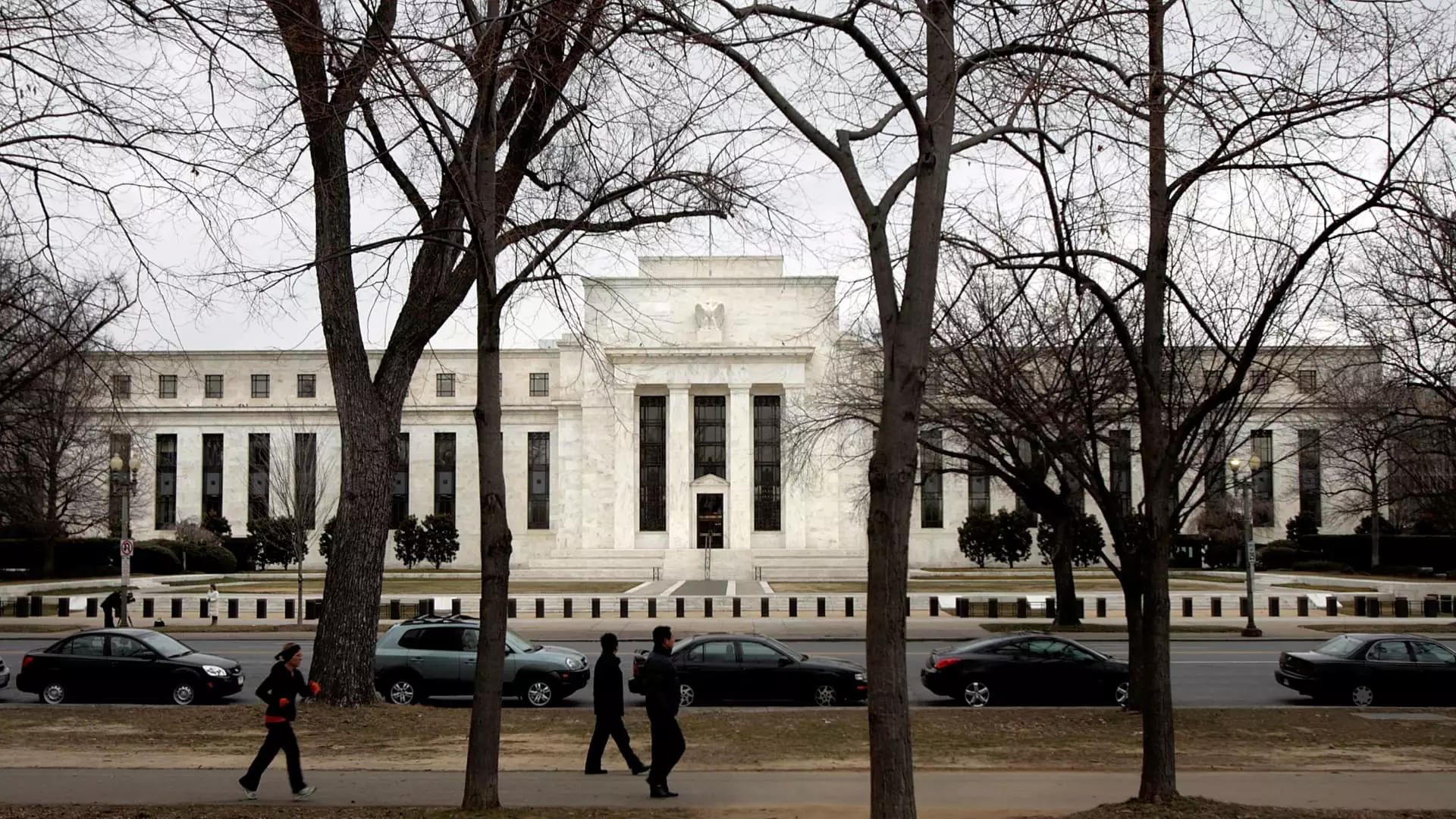The Federal Reserve’s decision to keep interest rates steady amid persistent inflation has raised eyebrows among economists and consumers alike. Even as inflation consistently runs above the Fed’s 2% target, the bank has chosen to abstain from making further cuts to interest rates. This is particularly puzzling in light of a significant reduction in rates last year and recent political pressure from President Donald Trump, who expressed a strong desire to see interest rates fall.
Inflation has emerged as one of the most pressing economic concerns following the pandemic’s upheaval. From supply chain disruptions to sudden spikes in consumer demand, prices have surged at unprecedented levels not seen since the early 1980s. The Fed’s series of interest rate hikes aimed at stabilizing the economy culminated in bringing the benchmark rate to its highest level in over two decades. The economy seems stuck in a limbo where inflation strains consumer budgets, while high borrowing costs loom overhead.
Despite the potential for rate cuts later this year, financial experts warn that such adjustments are unlikely to provide substantial relief for consumers feeling the squeeze of relentless inflation and elevated borrowing costs. Michele Raneri from TransUnion suggested that the anticipation of fewer cuts could lead to disillusionment among consumers who were hoping for financial breathing room.
For everyday consumers grappling with the twin pressures of inflated prices and high-interest rates, the implications are severe. Greg McBride, the chief financial analyst at Bankrate, stressed that the anticipated rate cuts would not significantly alleviate the financial burden facing many households. “Consumers facing burdensome interest rates would potentially see little to no alleviation in their financial situations,” he remarked.
With many credit card rates now averaging above 20%, the costs associated with borrowing remain staggering. As inflation looms large, Matt Schulz of LendingTree commented that the possibility of a swift reduction in rates is an illusion. For users of credit cards with variable interest rates, these figures are directly linked to the Fed’s actions—meaning that consumers may see only a gradual and less significant easing of rates.
The real estate market is feeling the heat of these economic conditions as well. The average rate for a 30-year fixed mortgage has climbed above 7%. Potential home buyers are faced with constricted purchasing power, exacerbated by the increasing home prices that have skyrocketed partly due to inflation and Fed policy. As Greg McBride predicts, mortgage rates will likely hover in the 6% range for the foreseeable future, maintaining a heavy burden on new buyers who seek affordability.
Unlike other variable-rate products, most residential mortgages are fixed, meaning homeowners aren’t immediately affected by the Fed’s rate policy unless they refinance or relocate. However, the heightened entry costs into housing markets can dampen prospective buyers’ enthusiasm. As such, those attempting to navigate home purchases find themselves in a precarious situation, with limited options for financial relief.
Auto loans illustrate another aspect of this economic situation. With the average interest rate on a five-year new car loan at around 5.3%, potential buyers face tough choices amid rising vehicle prices. Consumer Insights Analyst Joseph Yoon emphasized that while rates may decrease gradually, the general trend in vehicle pricing poses continual affordability challenges for consumers.
Given the average transaction prices for new vehicles approaching $50,000, the combination of high rates and expensive purchases drives the average loan amounts to new heights. This underlines the reality that, while potential rate cuts loom in the distance, the mounting prices of goods and services create a sluggish path to affordability for consumers.
On the higher education front, student loan interest rates remain steadfastly tied to the Fed’s maneuvers. For undergraduates entering the 2024-2025 academic year, the rate is set at 6.53%, climbing from the previous year’s 5.50%. Although most student loan borrowers enjoy fixed rates, the future for private student loans remains contingent on fluctuating benchmarks such as the prime rate or Treasury yields.
As deposit accounts react to changes in Fed policy, recent years have seen online savings accounts offering attractive yields nearing 5%. This is a silver lining for savers navigating through turbulent financial waters, as Schulz noted that such conditions make it an opportune time to secure high-yield savings accounts.
As inflationary pressures persist and borrowing costs remain elevated, consumers are left facing an uncertain economic landscape. The Federal Reserve’s cautious approach amid political pressures and market realities is indicative of a complicated balancing act. While rate cuts may be forthcoming, their tangible benefits for consumers remain underwhelming at best. The lingering question that consumers and financial analysts alike grapple with is: when will substantive relief be realized in the face of enduring economic challenges?


Leave a Reply